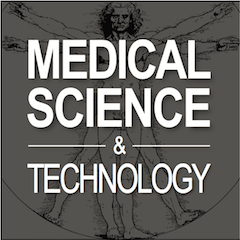Get your full text copy in PDF
– positive patients
Grażyna Klupińska, Krystyna Stec-Michalska, Cezary Chojnacki, Maria Wiśniewska-Jarosińska, Ewa Walecka-Kapica
Med Sci Tech 2009; 50(3): RA155-158
ID: 881682
Introduction: H. pylori infection always leads to the release of toxic oxygen radicals in gastric mucosa. There comes to gastric mucosa lesions only in part of patients, most probably in the cases of insufficient number of antioxidants such as i.e. melatonin. The aim of this study is to determine MDA in gastric mucosa in relation to H. pylori infection and melatonin concentration in gastric juice. Material and methods: three groups were distinguished, 25 subjects each: healthy and H. pylori negative - group 0, with symptomatic infection – 1 and with asymptomatic H. pylori infection – 2. Melatonin concentration in gastric juice was determined by immunoenzymatic method, the level of malondialdehyde - by fluorometric method. H. pylori infection was estimated with urea breath test. Results: In the group 0 concentration of melatonin in gastric juice was 3.61± 0.72 pg/ml. In H. pylori-positive subjects the concentration of melatonin in the group 1 was 0.85 ± 0.16 pg/ml (p<0.001) and in the group 2 – 1.92 ± 0.49 (p<0.01). The level of malondialdehyde in groups was: in the 0 - 0.48 ± 0.16 nmol/mg protein; in the 1 - 0.94 ± 0.19 nmol/mg protein (p<0.01) and in the group 2 - 0.86 ± 0.12 nmol/mg protein (p<0.01). No correlation was found between the concentration of melatonin and MDA in any of the investigated groups; these indices were respectively. Conclusions: 1. In H. pylori infected patients melatonin concentration in gastric juice is decreased but MDA level in gastric mucosa is elevated. 2. The above alterations are particularly distinct in subjects with symptomatic infection in the form of chronic dyspepsia. (Clin Exp Med Lett 2009; 50(3):155-158)
Keywords: Melatonin, malondialdehyd, Helicobacter pylori infection



